How about this for a face? Can you guess what it is without looking below? It is very furry. It has two large reflective eyes. It has no mouth parts, so it must not be able to eat. Therefore, it cannot live very long…
If you back up a bit, its entire body can be seen. Two large feathery antennae, a furry body, and six hairy legs.
A full view reveals that it is a Luna Moth (Actias luna). For the last week or two these have been visiting our windows at night. What magnificent creatures they are! This is a male as evidenced by its feathery antennae. It also has four oval markings on its wings. These are called “eyespots” and may serve to startle some potential predators by fooling them into thinking this is some sort of creature that might present a danger to them.
This male moth’s sole purpose in life is to find a female Luna Moth and mate with her. The female exudes a chemical attractant (a pheromone) into the air, and the male follows the concentration curve of this substance upstream to find the female. He does not eat and only lives about one week.
The larval stage of the Luna Moth hatches from a tiny egg. Then the resultant caterpillar begins a long period of growth. It consumes vegetation (a variety of tree species) and grows until it gets too large for its skin, so to speak. Then it molts the old skin while producing another larger skin (exoskeleton) to accommodate further growth. Each stage of growth and molting is called an instar, and Luna Moth larvae go through five instars and reach a size of about 2.5 inches in length before they pupate to form the adult winged moth. Each instar takes about a week to complete. So most of this creature’s life is spent as a larva. The adult is just a fleeting stage of its life. Although we humans are more preoccupied with the adult, in one sense, the adult moth is just a vehicle for the larva to produce more of itself!
This photograph illustrates the extreme disparity in size among insects. The Luna Moth is a giant among local insects; its wingspan is close to five inches. The midges shown here on the Luna Moth’s wing are also complete creatures with a digestive systems, a nervous system, wings for flying, eyes for seeing, antennae for detecting airborne compounds and everything else needed for survival…but all in a tiny package.
Here is a closeup photograph of one of the eyespots. This one is from the forewing of the moth, and one can see why they are called eyespots. It does look something like a half-closed eye.

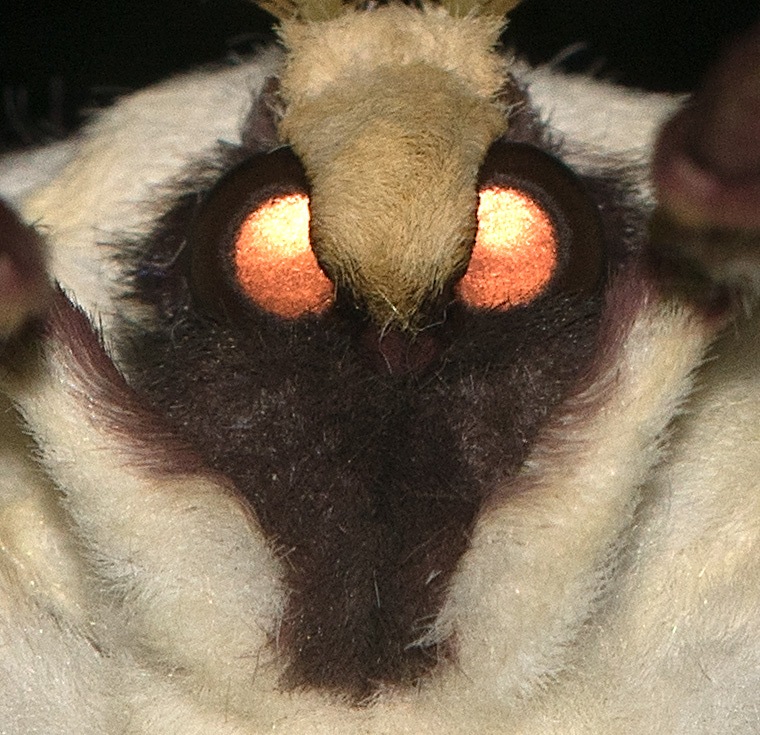
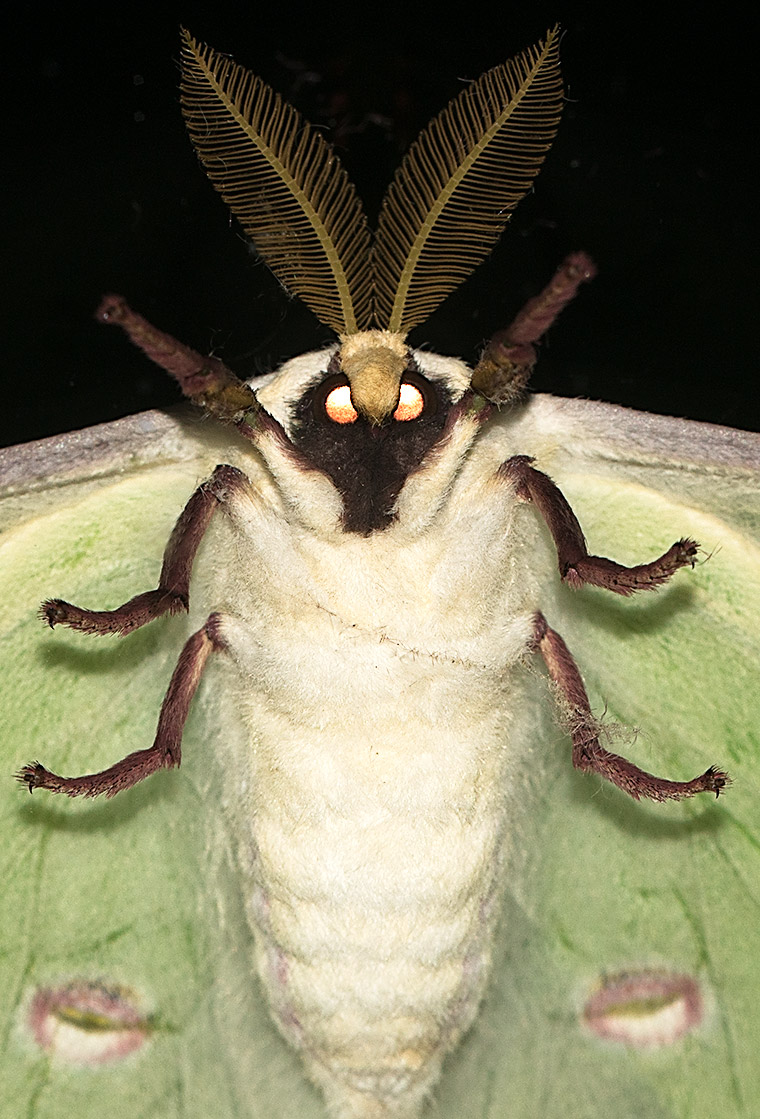
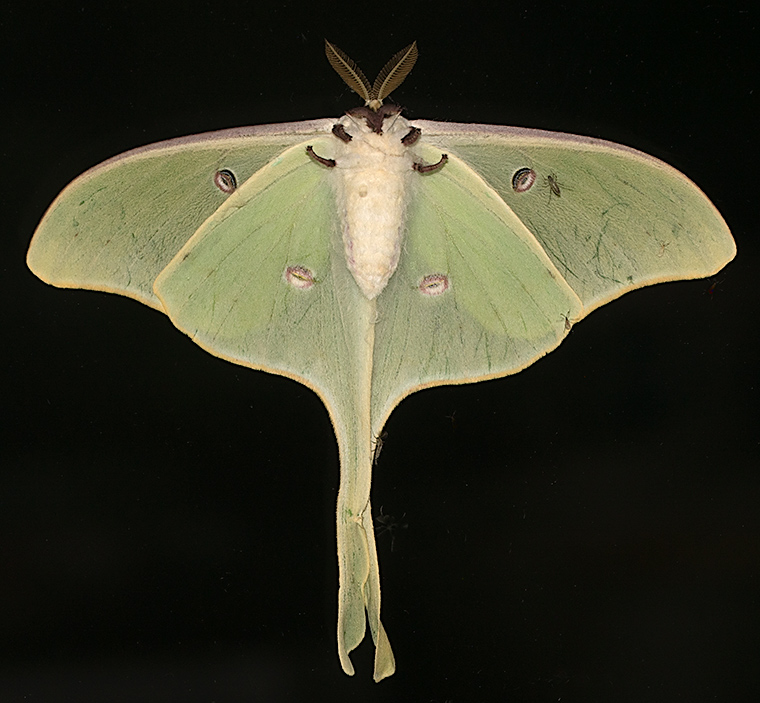
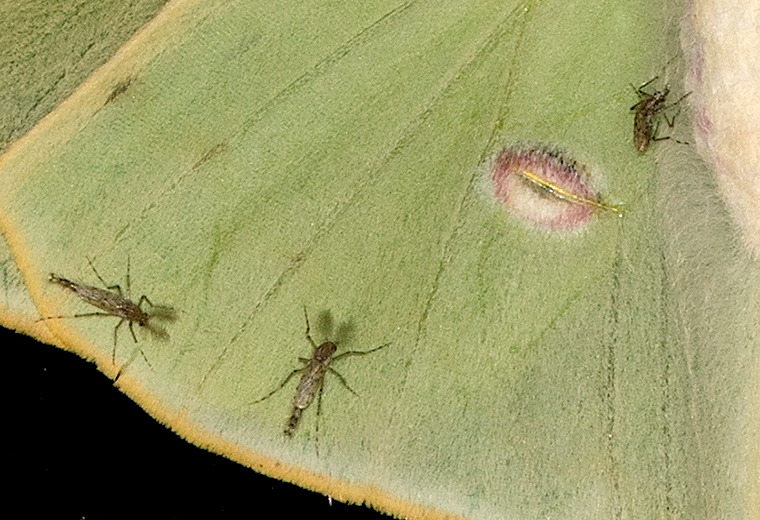
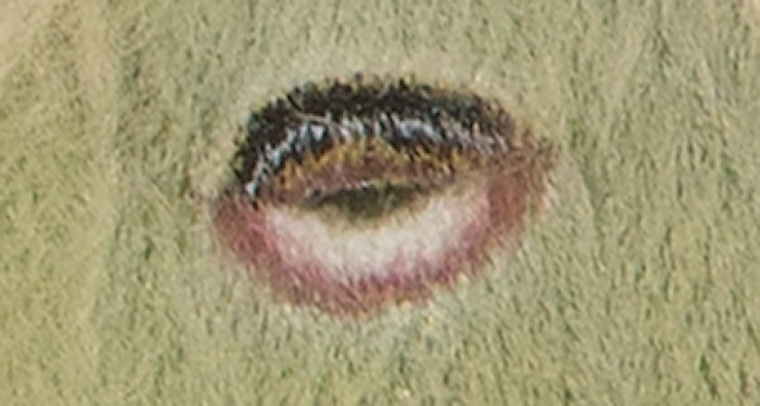
Fascinating…never knew
Great series of pictures, starting close then moving out. The glowing eyes on the top one are very impressive. Was he on a window?